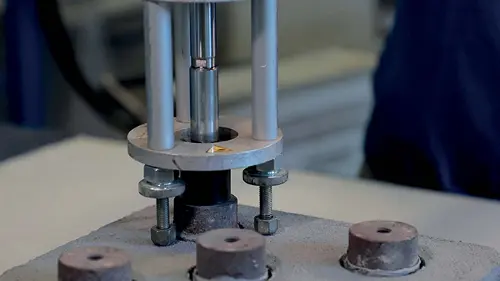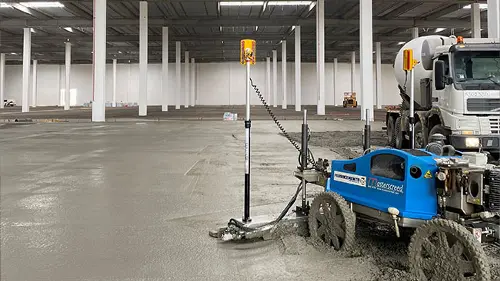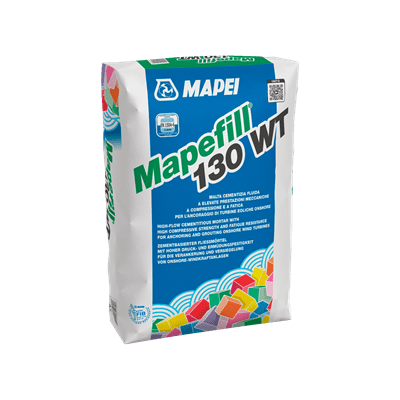.png?sfvrsn=ec652489_3)
8381ae89-8d1a-4c1e-861a-3b4435d2a386.png?sfvrsn=e652489_1)
Interviews
/
10/18/2023
The Green Deal challenge
Contributions and prospects of the chemicals industry for the building sector: Ina Hundhausen gives her views
Ina Hundhausen, Director of the Federation of German Manufacturers of Chemicals for the Building Industry, describes the prospects of the chemicals industry and the contribution it can make to the Green Deal challenge
Ina Hundhausen has been General Manager of Deutsche Bauchemie, the German Federation of producers of construction chemical products, since 1st July 2022. She studied business economics at university and has twenty-five years’ managerial experience in international marketing and sales in the construction industry and in automation and control systems. She is an expert in communications and, since 2018, has been spokesperson for the BIM (Building Information Modeling) project of the German construction industry. She also has in-depth knowledge of all issues regarding sustainability.
What can the chemical construction products sector count on to tackle the challenges posed by the Green Deal?
The transition towards a more resilient, greener, and more digitalised construction industry launched by the European Commission, and other initiatives such as a revision of REACH regulations and a programme to review and update standards regarding construction products, has been affecting and involving companies operating in our sector for some time. And this commitment will continue in the near future. To achieve the objectives of the Green Deal, the construction sector needs precisely those chemical construction products for the building sector produced by companies like those belonging to our Federation. It is important to support companies from the sector in the development and launch of sustainable, efficient products when managing resources. And to achieve this aim, we need regulations that promote our products and their use. We also need standards that take sustainability into consideration without, however, reaching a point whereby their application would be so restrictive that they would affect our formulations and, as a result, reduce our capacity to innovate.
We need standards that take sustainability into consideration without adopting a too restrictive application that would affect our formulations and reduce our capacity to innovate
What does the work of your Federation concentrate on primarily?
Nowadays we are faced with a serious challenge from a communications perspective: as a Federation, we need to strengthen our communications with the outside world in order to clarify our position with an increasingly wider audience. Over the last few years, we have managed to create a new space for communications; we have also put standards for the sector in place and strengthened our Advocacy Team in Brussels. Also, as far as internal communications are concerned, which means with companies that are part of the Federation, it is very important to process the enormous amount of information regarding new legislation and new regulations thoroughly and adequately, so they can be taken on board and processed in a timely manner. And to do this, we have created various specific services for members of our Federation: for example, we have created EPDs (Environmental Product Declarations) for our sector and lists of product characteristics such as those required by BIM, as well as evaluation reports for various product groups.
What turning points will enable the requirements of the Green Deal to be met?
European regulations regarding construction products (BauPVO) are extremely important for the construction sector. Thanks to the modifications we have already programmed, a lot of the problems we have at the moment regarding the harmonisation of European standards should be ironed out. What is more, this will provide a concrete contribution to implementing the Green Deal from a European perspective. Only by so doing will the new European standard regarding construction products be in a position to provide a real contribution to a transformation of the sector, making it greener and more digitalised while, at the same time, supporting the trend in renovation and restoration work and, as a result, strengthening the common market. The revision of REACH guidelines will undoubtedly make a significant contribution and should, in turn, provide an effective contribution to achieving the objectives of the Green Deal.
A balance will certainly need to be found between, on the one hand, sustainable technical solutions that lead to an increase in energy efficiency, optimization of natural resources, and a reduction of CO2 emissions, and, on the other hand, a total “ban” on the use of materials characterised by specific levels of risk or harm. The approach behind REACH regulations to promote appropriate risk evaluation is, therefore, the best solution in order to find the right balance. This same approach should also be maintained when updating REACH regulations.
A balance will need to be found between reducing CO2 emissions, and, on the other hand, a “ban” on the use of materials characterized by specific levels of risk or harm
The German chemical construction products industry will provide its contribution to the transition towards a greener, more digitalised construction sector, as required by the European Commission, through various “success stories”. What will they be like?
In the past, we came up with a campaign on the Green Deal, which we are currently implementing. This campaign should show our politicians and the public the fundamental contribution chemical products have in promoting sustainability. It is important, now, to highlight that the update to regulations regarding construction products and raw materials is just part of a complicated context that characterises the entire European legislative framework: the legislative process to regulate construction products is currently ongoing and over the course of 2023, we should have a first draft of the updated REACH regulations.
The campaign, which we launched in November 2022 during the World Climate Conference, illustrates several concrete examples which, within the chemical construction products sector, play a part in contributing towards achieving the objectives of the Green Deal. It highlights, in particular, the contribution our sector is making in fighting climate change. The main slogan is “Reduce CO2 emissions from constructions? Only with us.” The main feature is a section of the German Federation’s website dedicated to the campaign which contains various success stories in the field of sustainability. These show, for example, how the use of polymer fibers in a concrete mix can reduce or eliminate the need for steel rebarto reinforce concrete and, as a result, reduce CO2 emissions, or how an innovative mortar can be used to speed up the construction of offshore structures for the production of wind-based energy. In addition, there are also posts on social media, including LinkedIn.
The campaign was launched in November 2022 from the European Parliament. Every German Member of European Parliament found a tag attached to the handle of their office door with the campaign slogan and a QR code containing a link to the campaign web page. The campaign was launched online in November 2022; in 2023 a video and a trailer for LinkedIn were produced; and since April, posters have been on display in Brussels in the area around the European Parliament to “accompany” the work of the Parliament on regulations for construction products.

The Sfalassà viaduct, on the Salerno-Reggio Calabria motorway. Between 2010 and 2012 Mapei supplied the products for repairing the concrete, ensuring great durability for the work.
Is there really a new approach in the building industry which enables to construct sustainable buildings with zero impact on the climate?
Chemical products in the construction industry are used in the refurbishment and renovation of old buildings and to ensure new builds last longer. There are countless ways of using chemical products in the construction industry; for example, we can create concrete with low CO2 emissions and optimise their formulation so that a lower amount is required. Chemical products for the construction industry can modify the properties of materials, so they can be applied more quickly, even in difficult site situations and conditions.
So, even if only used in small amounts, chemical materials for the construction industry can have an enormous impact and considerably improve the efficiency of resources in the construction sector. This is already happening as we speak, albeit behind the scenes: for foundations, for example, or behind a façade, or as part of a surface coating system.There is, however, one aspect that needs to be clarified: new chemicals for the construction sector promote the use of systems pertaining to construction work. They often work in combination with other sectors or are just part of a more complex system. This is why, in future, we will have to work in such a way that producers of chemical products for the construction sector collaborate effectively with producers of other systems.
Chemical products for the construction sector will undoubtedly be of great help in industrialising sites, such as when constructing modular buildings or those built in series. As soon as chemical products are processed using mechanical means they undergo some form of change, such as passing to the liquid state, taking into consideration their characteristics. This can only work if there is close collaboration between manufacturers of plant equipment and producers of chemical products for the construction sector. The same thing happens when creating precast elements: the capacity of producers of chemical construction products to understand the technology behind this transformation and ensure their products adapt accordingly and effectively is decisive.
There are countless ways of using chemical products in the construction industry; for example, we can create concrete with low CO2 emissions and optimise its formulation so that a lower amount is required

The viaduct on Lake Turano in Castel di Tora (Rieti, Italy) is an example of how chemical products for concrete repair can guarantee a longer life cycle for an infrastructural work.
What objectives are companies from the sector setting themselves on this journey towards a more sustainable construction industry? How are they able to combine these objectives with the economic aspect ?
All producers of chemical construction products have set themselves the objective to provide, through their products, a contribution to reducing CO2 emissions. A considerable reduction in CO2 emissions can also only be achieved through the use of chemical products that provide adequate protection for a building and, as a result, ensure a longer service life. Chemical products for the construction sector play an important role from this perspective; for example, admixtures can start reducing CO2 emissions right from the phase in which concrete is actually produced.
CO2.emissions can be reduced considerably if we do not need to construct a new building or structure. For example, if a viaduct along a motorway is protected with the right chemically protective materials, the concrete sections will not degrade. Otherwise, salts will be able to penetrate undisturbed into the concrete and rust the steel reinforcement in the concrete and gradually degrade the bridge. If we manage to refurbish and renovate more and construct less, in future we will need fewer resources. In addition, we will use more and more recycled materials to construct new buildings, and this will also help reduce consumption of raw materials.
Products for the construction sector will be prioritised to identify sustainable solutions and to automate operations on site, and similarly for the prefabrication of modular constructions. It is also important to supply chemical products for the construction sector along with other products for the construction sector within the context of an intelligent systems approach, for example, supplying external thermal insulation systems together with protective coating systems.
What is the current status of digitalisation in the chemical construction products sector? And the Green Deal? Do you believe we will be able to enact it?
It is progressing, but, compared with other sectors, there is still a lot to do. The Green Deal, through the requirements and regulations regarding data collection, will help stimulate digitalisation. And through industrialisation, BIM and the modular construction approach will also bring along more digitalisation. In addition, there will be more digitalisation in administrative work and in optimising contacts with clientsAs far as Green Deal is concerned, I believe we will find the right framework, and we will overcome the current situation of excessive regulations and restrictions and legislation yet to be approved. In my view, we can still expect there to be several more years of contrast between governments and the economy, but I believe that, in the end, we will find the right balance through democratic consensus and by modifying standards and bureaucracy. Often, the best innovations are the result of emergencies and difficulties. I believe that, in thirty years’ time, historians will look back and confirm that the Green Deal arrived just in time to avert the collapse of our climate and that it encouraged and even compelled the rest of the world to reduce CO2 emissions in order to limit climate change and safeguard future generations.










